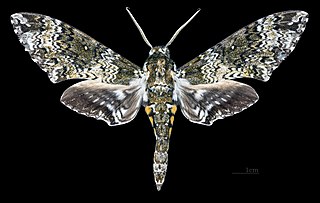Related Research Articles

Marcus Claudius Marcellus, five times elected as consul of the Roman Republic, was an important Roman military leader during the Gallic War of 225 BC and the Second Punic War. Marcellus gained the most prestigious award a Roman general could earn, the spolia opima, for killing the Gallic military leader and king Viridomarus in hand-to-hand combat in 222 BC at the Battle of Clastidium. Furthermore, he is noted for having conquered the fortified city of Syracuse in a protracted siege during which Archimedes, the famous mathematician, scientist and inventor, was killed. Marcus Claudius Marcellus died in battle in 208 BC, leaving behind a legacy of military conquests and a reinvigorated Roman legend of the spolia opima.
The spolia opima were the armour, arms, and other effects that an ancient Roman general stripped from the body of an opposing commander slain in single combat. The spolia opima were regarded as the most honourable of the several kinds of war trophies a commander could obtain, including enemy military standards and the peaks of warships.
Viridomarus or Britomartus as translations vary, was a Gaulish military leader who led an army against an army of the Roman Republic at the Battle of Clastidium. The Romans won the battle, and in the process, Marcus Claudius Marcellus, the Roman leader, earned the spolia opima by killing Viridomarus in single combat.

Lars Tolumnius, was the most famous king of the wealthy Etruscan city-state of Veii, roughly ten miles northwest of Rome, best remembered for instigating a war with Rome that ended in a decisive Roman victory.

Orthosia opima, the northern drab, is a moth of the family Noctuidae. The species was first described by Jacob Hübner in 1809. It is found from central and northern Europe east to central Asia. In the west and north it is found from France through Great Britain up to southern Fennoscandia, south from the Alps up to the Balkans.

Manduca sesquiplex is a moth of the family Sphingidae. It is known from Mexico, Costa Rica and Nicaragua.
Eunidiini is a tribe of longhorn beetles of the subfamily Lamiinae. It was described by Téocchi et al. in 2010.
Eunidia is a genus of longhorn beetles of the subfamily Lamiinae.
Eunidia fallaciosa is a species of beetle in the family Cerambycidae. It was described by Stephan von Breuning in 1939. It is known from Somalia.
Eunidia rufescens is a species of beetle in the family Cerambycidae. It was described by Breuning in 1939. It is known from Mozambique, Kenya, and South Africa. It contains the varietas Eunidia rufescens var. holatripes.
Eunidia annulata is a species of beetle in the family Cerambycidae. It was described by Per Olof Christopher Aurivillius in 1924.
Eunidia brunneopunctata is a species of beetle in the family Cerambycidae. It was described by Per Olof Christopher Aurivillius in 1911. It is known from South Africa, Malawi, Angola, Kenya, Ethiopia, Mozambique, Botswana, Sudan, Namibia, Senegal, the Democratic Republic of the Congo, Tanzania, Somalia, and Uganda.
Eunidia haplotrita is a species of beetle in the family Cerambycidae. It was described by Per Olof Christopher Aurivillius in 1911.
Eunidia kristenseni is a species of beetle in the family Cerambycidae. It was described by Per Olof Christopher Aurivillius in 1911. It is known from tropical Africa.

Eunidia tripunctata is a species of beetle in the family Cerambycidae. It was described by Per Olof Christopher Aurivillius in 1911.
Eunidia batesi is a species of beetle in the family Cerambycidae. It was described by Olliff in 1889.
Eunidia caffra is a species of beetle in the family Cerambycidae. It was described by Fahraeus in 1872.
Eunidia nebulosa is a species of beetle in the family Cerambycidae. It was described by Wilhelm Ferdinand Erichson in 1843. It is known from Australia, Senegal, Cameroon, Gabon, the Democratic Republic of the Congo, South Africa, Madagascar, Ethiopia, Ivory Coast, Kenya, Namibia, Angola, Niger, Saudi Arabia, Somalia, Mozambique, Tanzania, and Zimbabwe.
Eunidia strigata is a species of beetle in the family Cerambycidae. It was described by Fahraeus in 1872. It contains the varietas Eunidia strigata var. damarensis.
Leia opima is a species of fungus gnats in the family Mycetophilidae.
References
- ↑ BioLib.cz - Eunidia opima. Retrieved on 8 September 2014.
| This Eunidiini article is a stub. You can help Wikipedia by expanding it. |